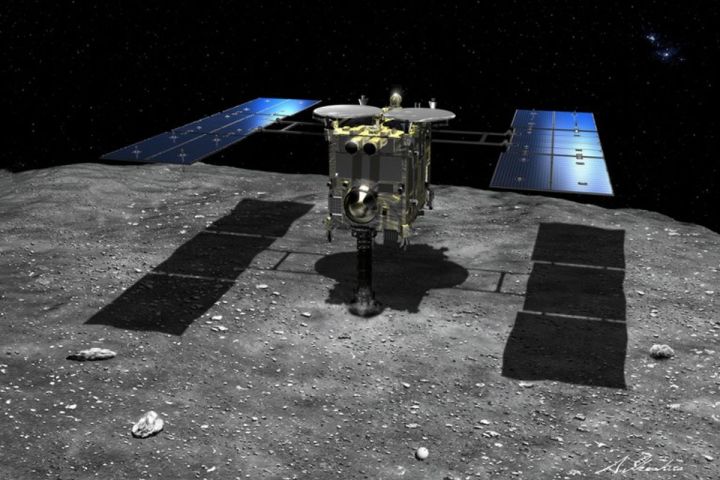The Japan Aerospace Exploration Agency (JAXA)’s spacecraft Hayabusa 2 will soon be touching down on the asteroid Ryugu, where it will collect a sample from the surface by firing a bullet into the soil to collect matter thrown up by the impact. The sample will be returned to Earth in 2020, where it can be analyzed to learn more about the formation of asteroids in the early solar system.
The Hayabusa 2 craft spent 42 months traveling to its destination, where it arrived last year and landed two rovers. The craft had been planning to touch down on the asteroid last year as well, but images of the surface showed that it was extremely rocky with a number of large boulders than would have made landing perilous. The JAXA team delayed the touchdown until it was able to identify a safer landing site for the craft to make its sample collection.
The asteroid Ryugu, named after a dragon’s palace from a Japanese folk tale, is in an elliptical orbit between Earth and Mars. It is approximately 1 kilometer (0.6 miles) in diameter and is part of a group of asteroids discovered in the 1930s called the Apollo Group. It is classified as a near-Earth object, and, rather alarmingly, as a potentially hazardous asteroid because it approaches close to Earth and is large enough that an impact would cause significant damage. But no need to worry just yet: Ryugu will not be impacting Earth any time in the next few hundred years.

Ryugu is of interest because of its unusual composition, and qualifies as a rare “Cg” spectral-type asteroid. Spectral type is a classification based on the emission spectrum and color of asteroids, which is thought to correspond to the composition of the surface. The asteroid is believed to be composed primarily of nickel and iron, as well as cobalt, water, nitrogen, hydrogen, and ammonia. According to the website Asterank, the materials for mining on Ryugu are worth an impressive total of $82.76 billion, making it the most cost effective asteroid for mining discovered so far.
The touchdown on Ryugu is planned for 3 p.m. PT on Thursday, February 21. If you’re keen to see it happen in real time, there will be a live broadcast from the control room which will be announced on Hayabusa 2’s Twitter page. In the meantime, you can track what the craft is doing right now within information on everything from precise location to power usage at the Haya2NOW site.



